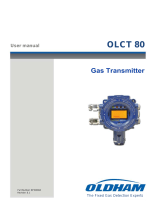
SG2067-2
Design Challenges
The functionality and the performance of
an electronic energy meter outperform
those of the traditional Ferraris wheel
meter. One advantage of an electronic
meter in monitoring nonlinear loads is its
high metering accuracy—electronic
measurements are more robust and
accurate. Cost and reliability are the
main obstacles blocking the electronic
energy meter’s wider use. To be more
attractive to customers, the electronic
meter must offer either more functionality
or the cost must be decreased near the
level of electromechanical solutions.
Freescale Semiconductor Solution
The Digital Signal Controllers from
Freescale Semiconductor are fully
versatile for a high-performance, low-
cost, single-chip energy meter with many
additional features not found in other
solutions.
A DSC-based meter can compute many
electric parameters including:
> Active power and energy
> Reactive power and energy
> Apparent power and energy
> Computations of maximum demands
(peak power) and archival
> Multiple tariff counters
> Record management system (RMS)
value of phase voltages and phase
currents
> Frequency power factor
> Higher harmonics analysis
Among the most important of the
controller’s peripherals are the 2 x 4
channel fast simultaneous sampling
12-bit analog-to-digital converter (ADC),
pulse width modulator (PWM), general
purpose ports, timers, Flash memory,
and microcontroller functionality at
40 MIPS. On-chip Flash is page
erasable and can be used more
inexpensively than traditionally used
EEPROMs.
The DSC can be implemented as a
power line modem. The modem’s
receive function uses the same voltage
samples used for power computation.
The transmit function uses an integrated
PWM peripheral, followed by a buffer
connected to the one power phase.
The on-chip ADC is capable of
simultaneous dual sampling, allowing
current and voltage to be sampled
together in each phase. Energy
computations consist mainly of
multiplication and addition operations,
which are easily handled by this DSC.
The high ADC sampling rate (up to two
samples at 830 kHz) contributes to
high measuring accuracy even with
nonlinear loads.
Phase voltages are scaled down to the
range of the ADC by resistor dividers.
They bias the zero-level input voltage to
the middle of the ADC’s range. The
phase current is measured by current
transducers, while the input level is
amplified by inverting operational
amplifiers (OPAMs). Depending on
current transducer type, software
correction of the phase shift may be
necessary before energy computation.
The power line modem is enabled in
software. The digital signal controller
is powerful enough to operate filters,
demodulators, transmit modulators,
and other necessary functions
simultaneously with energy
computations. The only additional
component is a power line interface
buffer with transformer. The buffer
consists of a simple totem pole transistor
stage. The transformer is mainly used to
isolate high voltage. Primary winding
coupled with a capacitor resonance
circuit performs transmit post-filtering.
These parts should be adapted
according to the modulation scheme
used. Appropriate modulations for this
purpose are Frequency Shift Keying
(FSK) in the frequency range 125–140
kHz, as specified by the European
Committee for Electrotechnical
Standardization (CENELEC), or below
450 kHz, as specified by the Federal
Communications Commission (FCC).
Data rate is 1200–2400 bps, sufficient for
data collection from meters. For higher
data rates, a more sophisticated
modulation scheme should be used.
Freescale Ordering Information
Part Number Product Highlights Additional Information
MC56F8100 Family
Note
40 MHz, 40 MIPS, up to 544KB Flash, 32KB RAM and Off-Chip Memory,
SCI, SPI, ADC, PWM, Quadrature Decoder, Quad Timer, FlexCAN,
GPIO, COP/Watchdog, PLL, MCU-style software stack support, JTAG/
OnCE for debug
www.freescale.com
MC56F8300 Family 60 MHz, 60 MIPS, up to 576KB Flash, 36KB RAM and Off-Chip Memory,
SCI, SPI, ADC, PWM, Quadrature Decoder, Quad Timer, FlexCAN,
GPIO, COP/Watchdog, PLL, MCU-style software stack support, JTAG/
OnCE for debug, temperature sensor
www.freescale.com
DSP56F800 Family 80 MHz, 40 MIPS, up to 31.5KB Flash, 6K words RAM and Off-Chip
Memory, SCI, SPI, ADC, PWM, Quadrature Decoder, Quad Timer, CAN
GPIO, MCU-friendly instruction set, JTAG/OnCE for debug
www.freescale.com
MC56F801x Family Up to 32 MHz, 32 MIPS, and up to 16KB Flash, 4KB Unified Data/
Program RAM, EEPROM emulation capability, SCI with LIN, SPI, I
2
C,
ADC, PWM, GPIO, COP/Watchdog, MCU-style software stack support,
JTAG/OnCE for debug
www.freescale.com
Note: MC56F8122 and MC56F8123 are not appropriate for this application.





